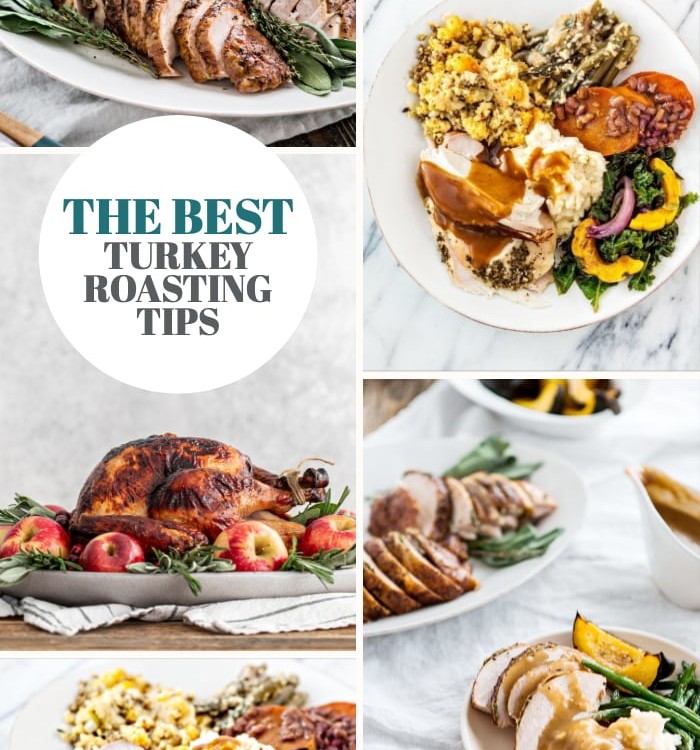
Turkey Roasting Tips
Here are some of my best turkey roasting tips for a turkey that is full of flavor. The turkey is the center piece of the Thanksgiving meal and is arguably the trickiest part of the meal. Learn all about turkey brining, turkey roasting times, and turkey roasting temperatures.
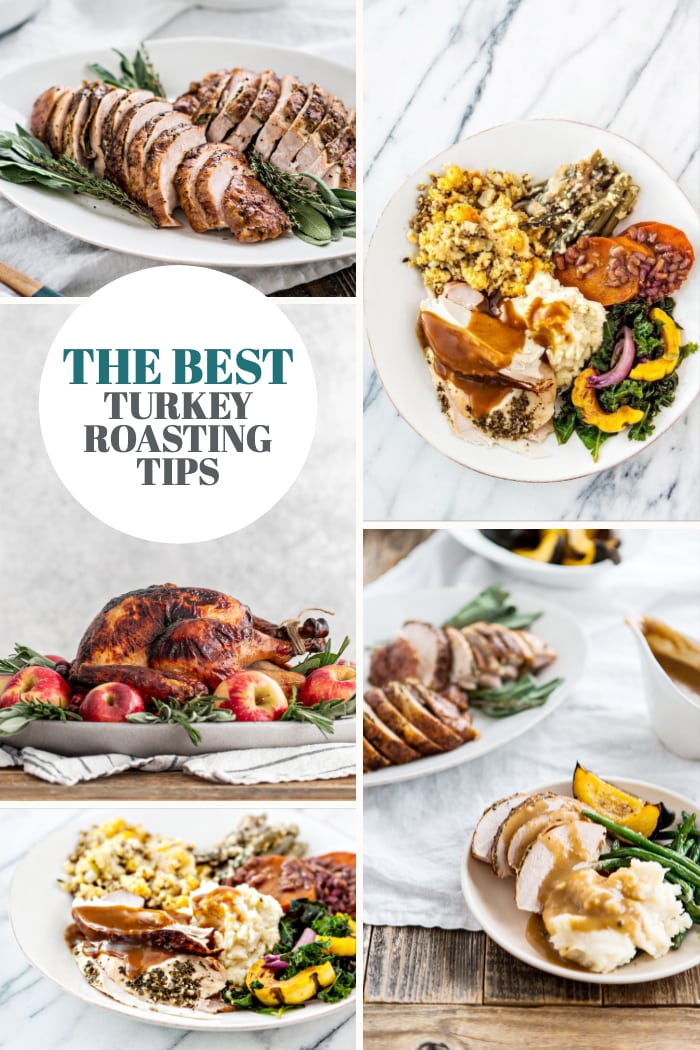
This post has been updated from the archives. Originally published on November 12, 2012.
How to Roast a Moist, Flavorful Turkey
When one of my friends found out that I would be working on a few Thanksgiving recipes ahead of time to share on GoodLife Eats, she immediately asked if she could come watch me make the turkey.
My friend would be hosting Thanksgiving for 20 people and she’s never done a turkey on her own. I am sure that many of us have been in that position and felt the pressure to perform. It is a little nerve wracking.
So today I thought I’d share some of the tips that I learned over the years of preparing turkey for Thanksgiving on my own and maybe take a little bit of that stress away from a few of you.
This moist flavorful turkey impressed me so much that I have always brined my turkey since learning the technique.
Thawing a turkey correctly is crucial in the Thanksgiving preparation process. Before getting started, head over to my How to Thaw a Turkey tutorial where I share the safest (and easiest!) ways to thaw a whole turkey, turkey breast, turkey wings, or turkey legs as well as one way you should NEVER thaw a turkey.
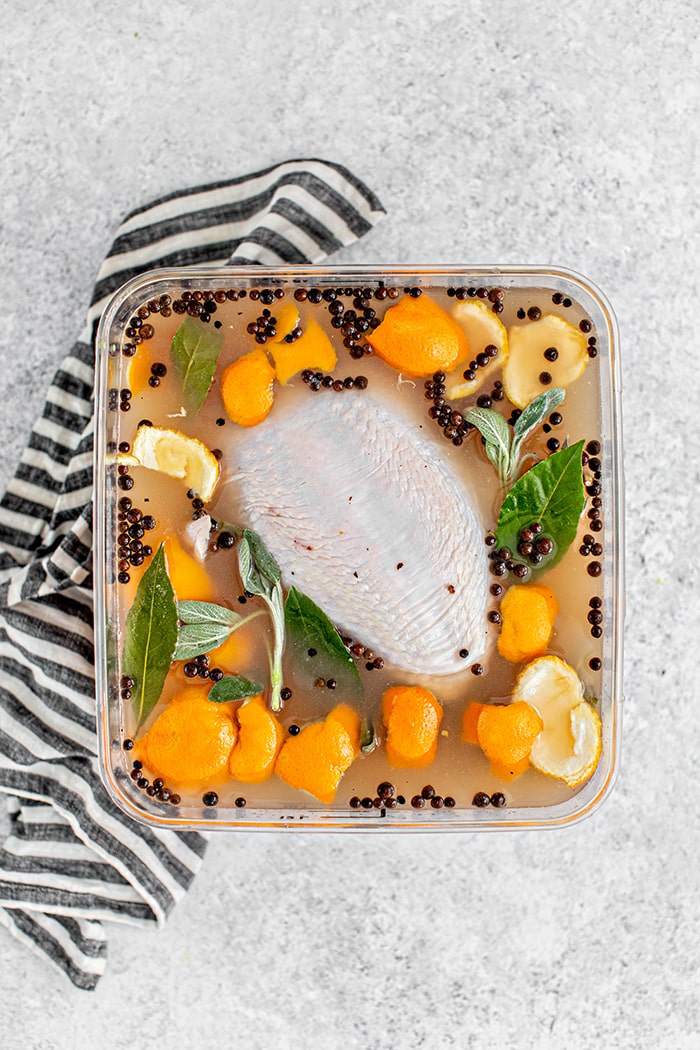
Should I Brine a Turkey?
Yes! Definitely. Brining the Turkey will give it extra flavor and moisture! You should brine a turkey because it has so much more flavor, the meat gets seasoned all the way through, and it is much more juicy!
Before you begin preparing your roasted turkey on Thanksgiving, you’ll need to make sure you have some of the required equipment. If have roasted a turkey before, none of this should be new to you.
Previously, turkey had never been my favorite part of the Thanksgiving meal. I LOVED all the sides and desserts, but turkey was something that always tasted dry and without flavor to me.
The answer was that the turkey was brined. I had never heard of this method before even though I was fairly accomplished in the kitchen for someone my age.
It was usually something that seem to have a never ending supply of leftovers. UGH. 15 years ago I had ate a turkey that was a complete game changer for me. I asked what was different and why it was so good.
It had flavor, it was seasoned all the way through. The meat was tender and juicy instead of tough and dry.
I Had Some Questions About Brining
- What is brining?
- How do you brine a turkey?
- What is in a turkey brine?
What Do You Need to Brine a Roasted Turkey
In order to brine and roast a turkey, you need a few things:
- Turkey
- Brine Recipe Ingredients
- Probe Thermometer
- Roasting Pan with Rack
- Oven
- Big cutting board
- Carving Knife
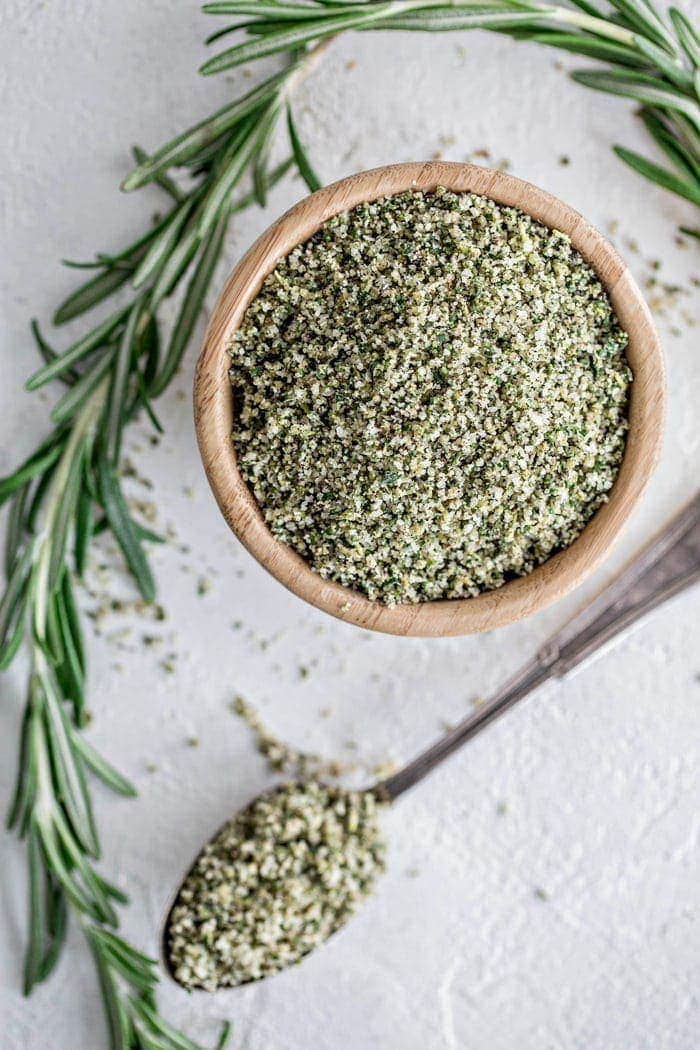
Turkey Brining Tips and Recipes
Brining your turkey will help infuse it with flavor while also keeping the meat incredibly moist. Note that you’ll have to plan ahead as a turkey needs to soak in the brine for approximately 24 hours.
- This recipe for Garlic Herb Peppercorn Dry Brine is really simple and produces juicy, seasoned turkey meat. If you’ve never brined before, a dry brine might be an easy starter brine because you don’t have to worry about liquid rations like you do in traditional brines.
- Brining your turkey with this Apple Cider Sage Brined Turkey before roasting will not only infuses the meat with the delicious flavors of fresh apple cider and sage, but it will help keep the meat moist and tender.
- Fresh Herb Citrus Brined Turkey combines lots of fresh herbs with a subtle hint of citrus. You can play with this one by adding different citrus fruits in combination or sticking to just one fruit. Oranges or lemons are my favorite.
- Brining a turkey in this Rosemary Beer Brine will tenderize the meat and infuse it with a TON of flavor for Turkey Day! This is our favorite turkey brine to use when smoking a turkey, but it can be used for roasted turkey as well.
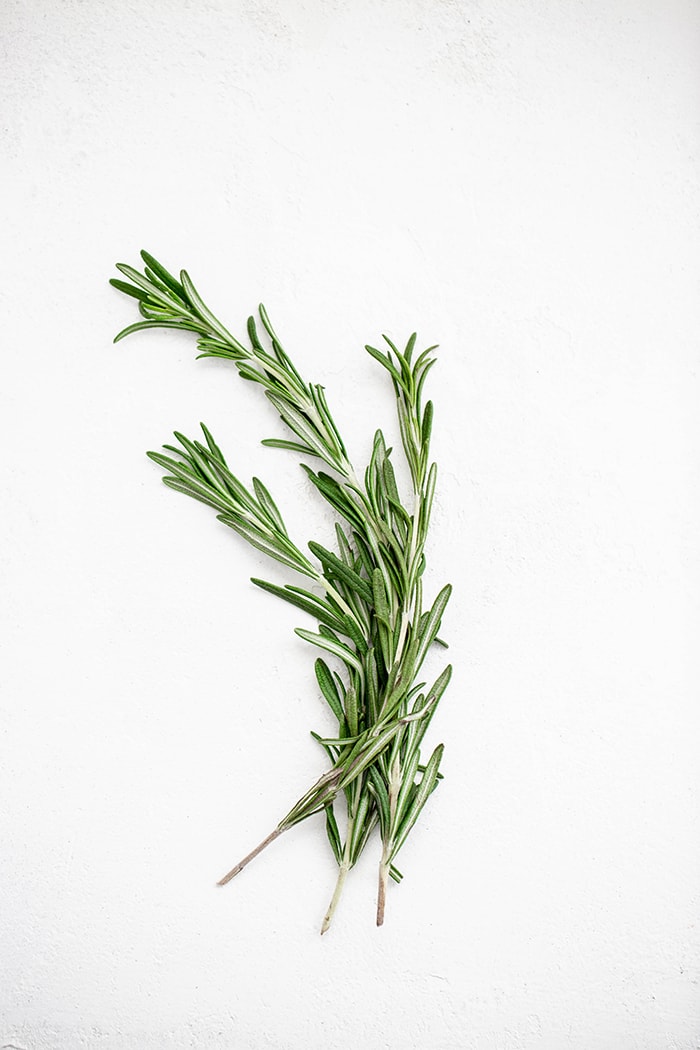
How to Roast a Turkey: My Turkey Roasting Method
How Long Does it Take to Roast a Turkey?
First, find out how much your turkey weights – this is important to estimate your cooking time. You can estimate your cooking time at approximately 10 minutes per pound when cooked at 375 degrees F.
However, this is for estimation purposes only turkey cooking times vary depending on a variety of things, such as:
- the size of the bird
- internal temperature the bird when you begin
- did you stuff your turkey?
- your oven – every oven runs slightly different (some hot, some cold, some exactly right)
Cook By Temperature, Not Time
There are a few things to know about roasting your turkey, and an important keys to success is cooking by temperature.
It is better to have general time guidelines and specific temperature milestones to meet rather than cooking for x number of hours. You avoid overcooked dry meat and undercooked unsafe meat when you use a digital probe meat thermometer. Place the probe in the thickest part of the breast before you begin cooking.
I typically choose a turkey around 16-18 lbs because I don’t like to have TONS and TONS of leftover turkey. If using a larger turkey, simply extend the roasting time and tent the breast with foil to avoid over browning.
1. Preheat the oven to 375 degrees F. Slather the outside of the turkey in butter as well as under the breast skin. I love using this garlic herb butter.
I like to chop up a lot of fresh herbs (thyme, rosemary, sage) and garlic and mix it with softened butter. Then, I rub that garlic herb butter UNDER the skin that covers the breast as well as all over the inside of the bird’s cavity.
Stuff the cavity with additional herbs, if desired, and an onion cut into sixths. Cover the wing tips with foil.
2. Use a V-Rack roaster for your turkey. Place 3 cups of water in the bottom of the pan.
Add chopped onion and carrots at the bottom of the roasting pan.
Place the turkey on the rack, starting with it facing breast side down. Roast for 45 minutes.
- If you don’t care to fuss with flipping your turkey, simply add 45 minutes on to the time on the following step. Some feel that the roasting position makes no difference. I’ve always used this method with great results so I’m not inclined to change.
- It helps to have a big wad of paper towels in each hand so you can easily flip it without slipping or burning yourself.
3. Remove the turkey from the oven, flip it breast side up, and baste the turkey with pan drippings.
Cover the breast with foil. Add an 2 more cups of water to the pan.
Roast the turkey for an additional 1 1/2 hours to 2 1/2 hours, or until the meat thermometer inserted in the breast registers 160-165 degrees F and the leg/thigh registers at about 170 degrees F.
- For an evenly browned turkey, rotate the turkey in the pan every 45 – 60 minutes during roasting.
- Remove the foil from the breast during the last 45 minutes of roasting.
4. When the turkey has reached the correct temperature, remove it from the oven, tent with foil and let it rest for 30-45 minutes on a large cutting board before carving.
For the complete ingredient list and detailed instructions, scroll to the bottom of this post for the FREE printable recipe card.
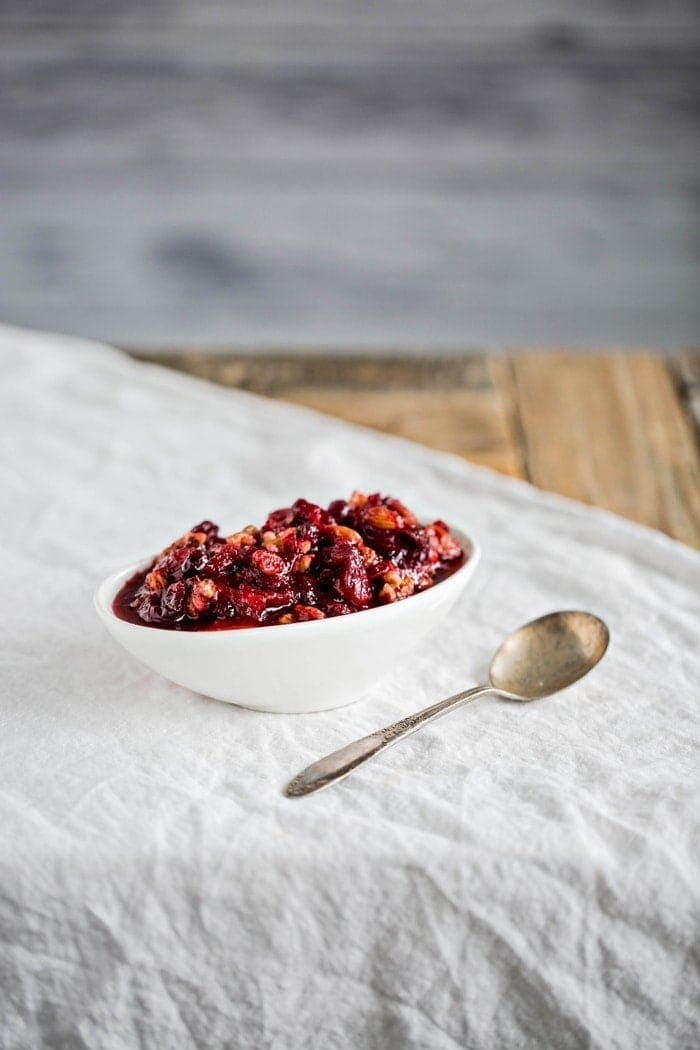
Gravy or Cranberry Sauce?
A big part of the Thanksgiving turkey is what you serve alongside the meat. Do you like cranberry sauce or turkey gravy? I have great recipes for both!
Fresh, tart cranberries are cooked and blended with agave, brown sugar, red wine, and pomegranate juice create a deliciously simple and smooth Red Wine Pomegranate Cranberry Sauce for your Thanksgiving feast.
If you like a chunkier cranberry topping, this Cranberry Orange Walnut Relish is a big hit! It has walnuts and golden raisins in it, tons of delicious fall flavors, and chunks of burst cranberries.
If you prefer gravy instead of cranberry sauce, don’t worry I have you covered there too. Check out my How To Make Turkey Gravy with No Lumps.
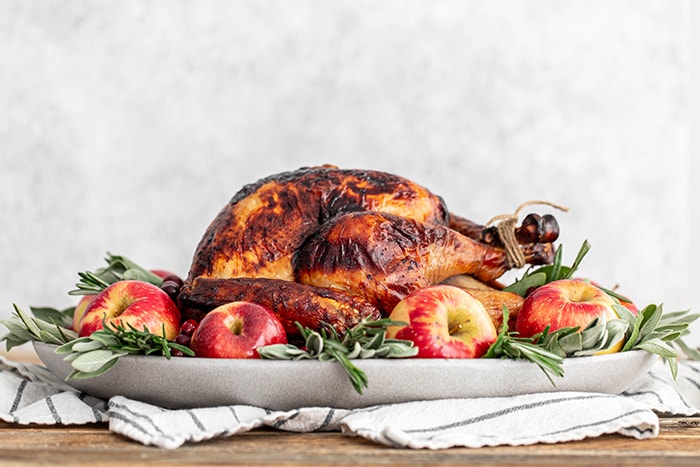
Additional Tips for a Successful Thanksgiving Turkey
Fresh, unfrozen birds taste best.
If possible, search for a free range turkey. You will typically have to place an order for these quality birds, so check your local specialty grocery store in advance.
Bring the turkey to room temperature before roasting.
I learned a few years ago to bring the turkey to room temperature on the counter about 2 hours prior to the planned roasting time.
This allows to bird to cook faster because the starting temperature is much warmer than one straight out of the fridge. Makes sense, right?
Don’t stuff the turkey’s cavity.
Your turkey will also cook faster without a stuffed cavity.
Still want to stuff your turkey? Check out my How to Roast a Stuffed Turkey tutorial so your bird turns out moist and juicy and the stuffing gets fully cooked through.
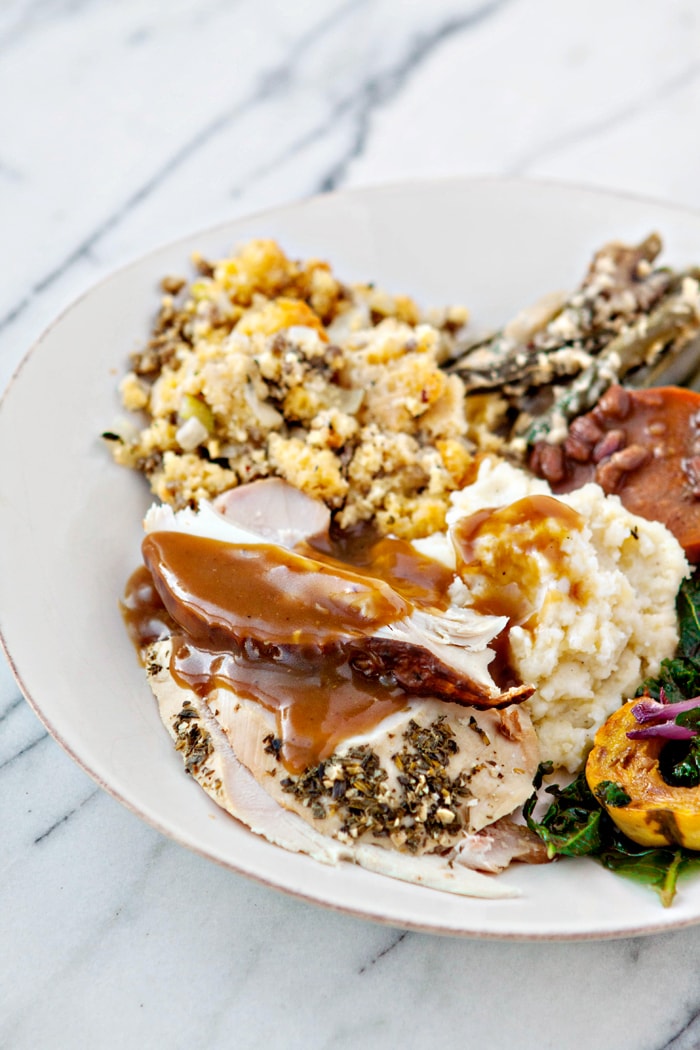
What Temperature is Turkey Done At?
A whole turkey is safe to eat when the breast meat reaches a minimum of 165 degrees F and the thigh meat reaches 170 degrees F.
The temperature will usually continue to rise during the initial few minutes of the rest period after you pull the turkey out of the oven, so I personally like to take my turkey out of the oven at 160 degrees F. Keep the thermometer in to ensure that it does make it up to 165 during the rest period.
Overcooked turkey = dry meat, so it is best to monitor the temperature closely and not rely on one of those pop up indicators. The pop up indicators usually activate long past the recommended turkey temp, yielding a dry, overcooked turkey. That is, if they work at all…often times those indicators will malfunction completely!
Should you Rest your turkey?
Absolutely! You might wonder: is it necessary to let the turkey rest. YES! The answer is definitely YES. If you carve your turkey before a 30 minute rest period, all of the juices will end up on your carving board rather than in the meat.
Waiting the 30 minutes also lets you get any last minute things done before the meal such as finishing off any side dishes, making the gravy, setting the table, or doing a quick kitchen clean up.
If you’re worried about your turkey being cold, the turkey will still be plenty warm, but you can also tent it with foil to keep heat in while it rests. Serving your turkey alongside hot gravy also helps the temperature of your turkey taste plenty warm when eating.
Why Do You Let Turkey Rest after Roasting?
The turkey’s temperature will continue to rise a few more degrees during the resting period. Resting allows the turkey to reach it’s final temperature without the meat becoming over cooking.
Letting the turkey rest helps the juices redistribute throughout the meat and be reabsorbed. The meat fibers also relax and widen. The result is incredibly juicy, tender meat that is also easy to cut.
If you carve your turkey right after it finishes cooking, you will lose all of those juices on your carving board because they won’t have time to redistribute throughout the bird, leaving you with dry turkey.
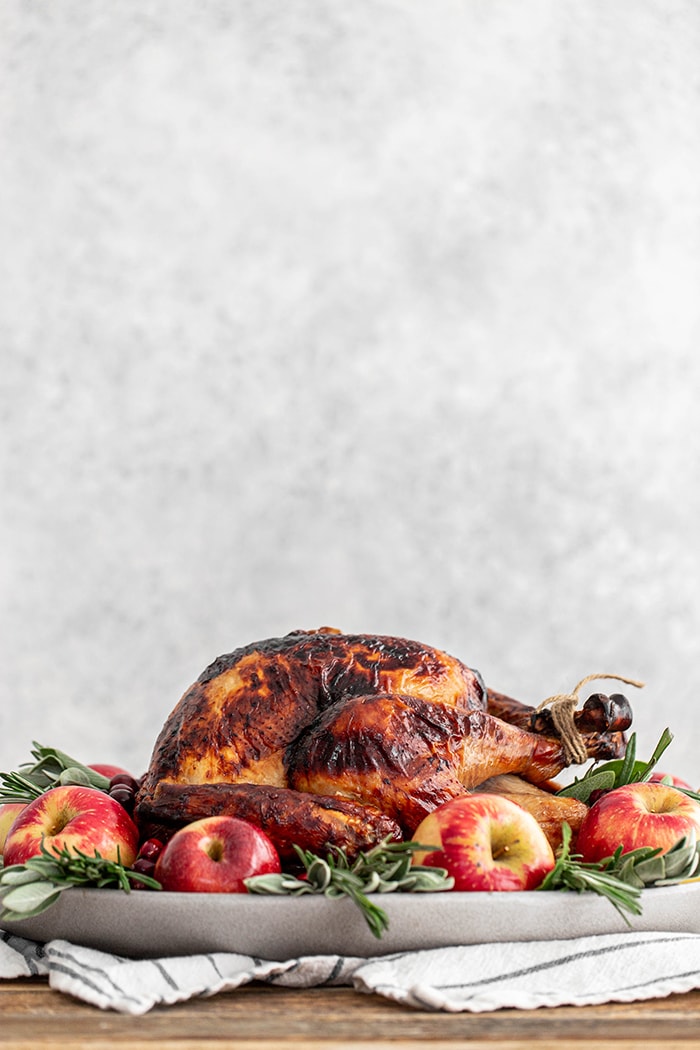
How Much Turkey Do I Need Per Person?
How much turkey do I need for this many people? The easy answer: Plan to purchase at least 1 lb. per person attending. This allows enough turkey to enjoy on the Thanksgiving day, plus a bit for leftovers.
If you like to have plenty of leftovers for the freezer or cooking up a big batch of soup, plan on double that, about 2-2.5 lbs of turkey per person.
My Turkey Finished Roasting Too Early – What do I Do?
Place a disposable roasting tray inside a well insulated cooler. Then, place the finished turkey on the roasting tray. Close the cooler, and store until ready to serve (within a reasonable amount of time).
The cooler will act as a warming drawer for the turkey, keeping it warm and ready for serving time, and the juices will have plenty of time to redistribute while while the turkey rests.
If your turkey finished roasting earlier than 2 hours too early, then you’ll need to take alternative measures:
- Let the turkey rest for 30 minutes after roasting completes.
- Carve the breast meat, legs, and, thighs.
- Arrange the carved meat on a large serving platter.
- Cover the platter with foil. Transfer the platter to the refrigerator.
- Just prior to serving your meal, reheat the platter in the oven for 20 minutes at 350 degrees F.
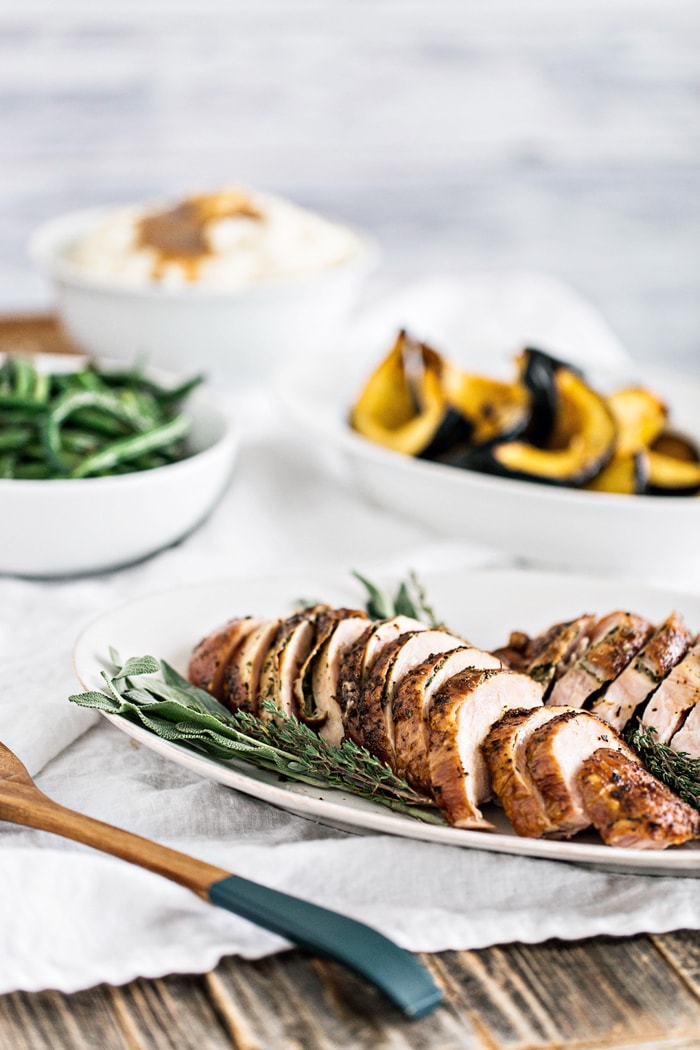
What is Another Way to Cook a Turkey Besides Roasting?
If you’d rather smoke your turkey, come check out my tried and true method along with my 8 pro tips for the best smoked turkey!
You can also cook a turkey in a turkey fryer and probably on a traditional BBQ as well. Sorry, I don’t have any tutorials for these methods!)
Looking for ways to use your leftover turkey?
Check out The Ultimate Guide to Thanksgiving Leftovers.
This post has lots of tips for reducing Thanksgiving waste, information on how long it is safe to eat Thanksgiving leftovers, how to properly store and freeze leftover roasted Turkey and Ham, and how to donate Thanksgiving leftovers.
You’ll also find a great selection of recipes that can be made using your leftover Roasted Turkey, Ham, and Cranberry Sauce.
What are your best tips for a perfect turkey on Thanksgiving?
Stay Inspired in the Kitchen!
Want more delicious recipes, kitchen tips, and meal inspiration? Sign up for the Good Life Eats Newsletter and get:
✔ Tried-and-true recipes—from quick weeknight meals to special occasion favorites.
✔ Seasonal meal ideas—helping you make the most of fresh, in-season ingredients.
✔ Time-saving kitchen tips—boosting your confidence and creativity in the kitchen.
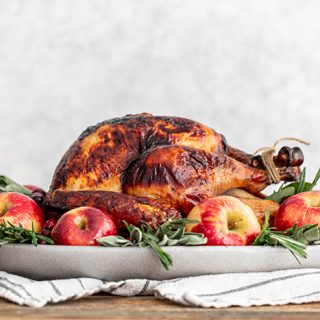
How To Roast a Turkey
The turkey is the center piece of the Thanksgiving meal and is arguably the trickiest part of the meal. Here are some of my best turkey roasting tips for a turkey that is full of flavor.
Ingredients
- 16 lb. Turkey
- Butter
- Rosemary
- Thyme
- Sage
- Garlic
- Onion
- Carrots
Instructions
- Preheat the oven to 375 degrees F.
- Slather the outside of the turkey in butter as well as under the breast skin. I like to chop up a lot of fresh herbs (thyme, rosemary, sage) and garlic and mix it with softened butter.
- Then, I rub that garlic herb butter UNDER the skin that covers the breast as well as all over the inside of the bird’s cavity.
- Stuff the cavity with additional herbs, if desired, and an onion cut into sixths. Cover the wing tips with foil.
- Use a V-Rack roaster for your turkey. Place 3 cups of water in the bottom of the pan.
- Add chopped onion and carrots at the bottom of the roasting pan.
- Place the turkey on the rack, starting with it facing breast side down. Roast for 45 minutes.
- If you don’t care to fuss with flipping your turkey, simply add 45 minutes on to the time on the following step. Some feel that the roasting position makes no difference. I’ve always used this method with great results so I’m not inclined to change.
- It helps to have a big wad of paper towels in each hand so you can easily flip it without slipping or burning yourself.
- Remove the turkey from the oven, flip it breast side up, and baste the turkey with pan drippings.
- Cover the breast with foil. Add an 2 more cups of water to the pan.
- Roast the turkey for an additional 1 1/2 hours to 2 1/2 hours, or until the meat thermometer inserted in the breast registers 160-165 degrees F and the leg/thigh registers at about 170 degrees F.
- For an evenly browned turkey, rotate the turkey in the pan every 45 – 60 minutes during roasting.
- Remove the foil from the breast during the last 45 minutes of roasting.
- When the turkey has reached the correct temperature, remove it from the oven, tent with foil and let it rest for 30-45 minutes on a large cutting board before carving.
Notes
The meat is safely done when the thigh meat reaches 170 degrees F and the breast meat reaches 160-165 degrees F.
Recommended Products
As an Amazon Associate and member of other affiliate programs, I earn from qualifying purchases.
Nutrition Information:
Yield: 14 Serving Size: 1Amount Per Serving: Calories: 980Total Fat: 38gSaturated Fat: 11gTrans Fat: 1gUnsaturated Fat: 25gCholesterol: 565mgCarbohydrates: 0gFiber: 0gSugar: 0gProtein: 148g
GoodLifeEats.com offers recipe nutritional information as a courtesy and is an estimate only. This information comes from online calculators. Although GoodLifeEats.com makes every effort to provide accurate information, these figures are only estimates.
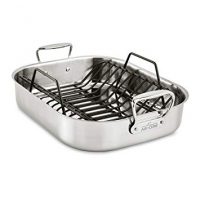
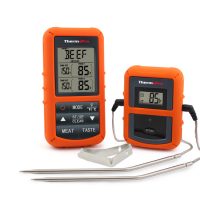
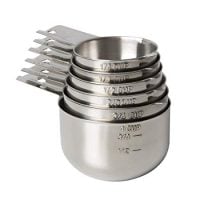
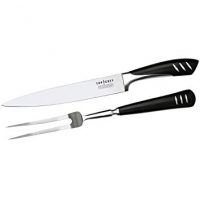
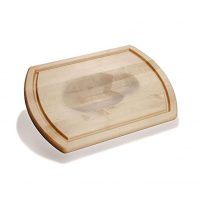
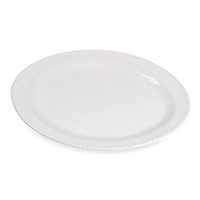
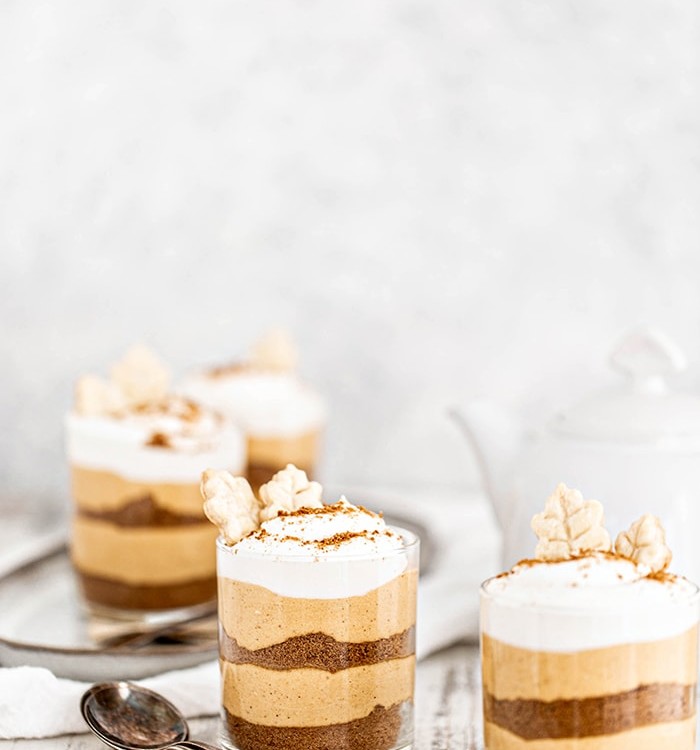

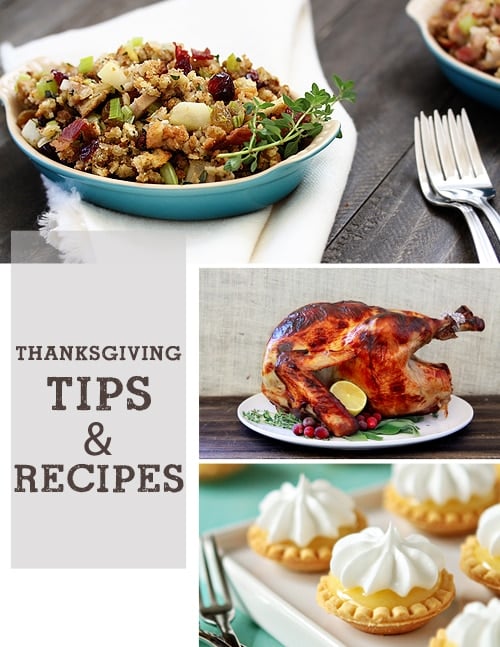
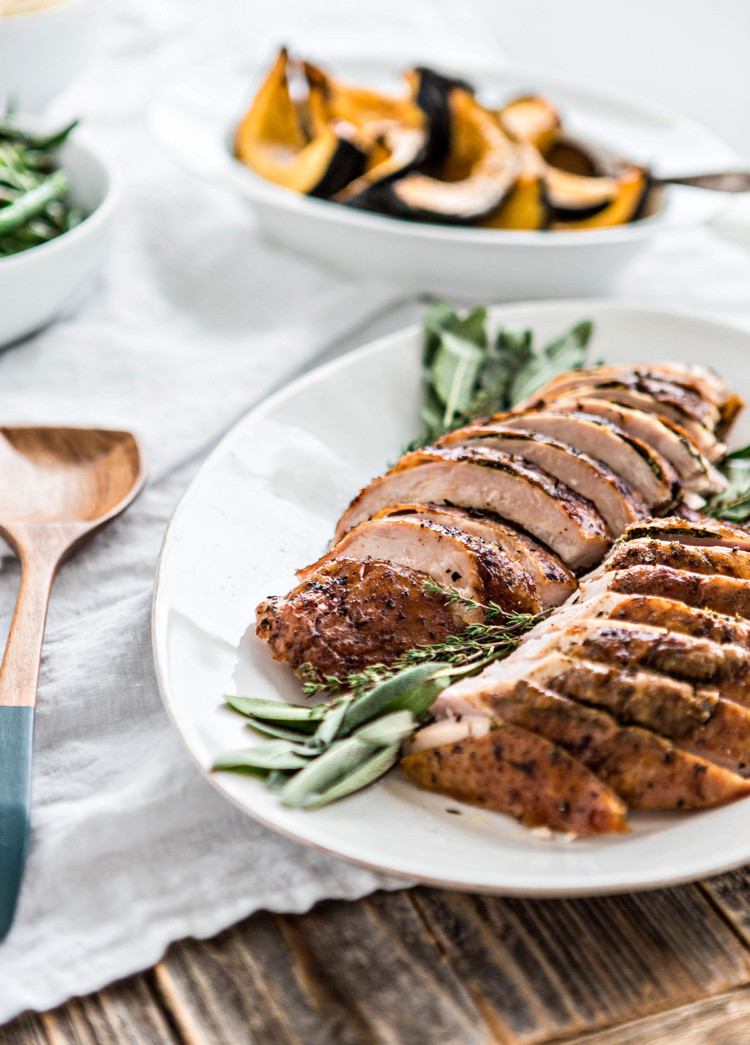

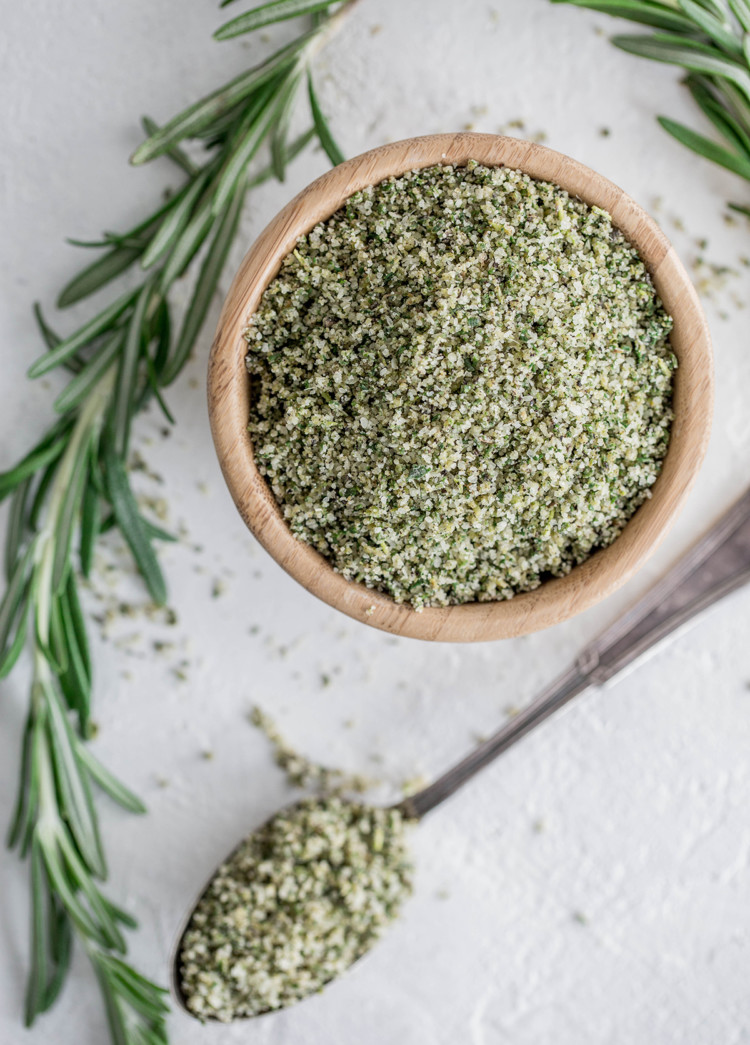
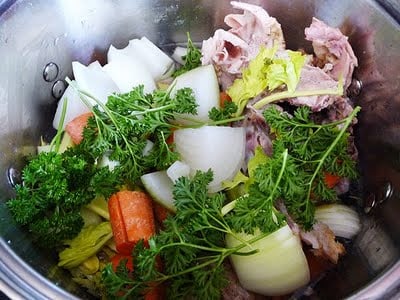
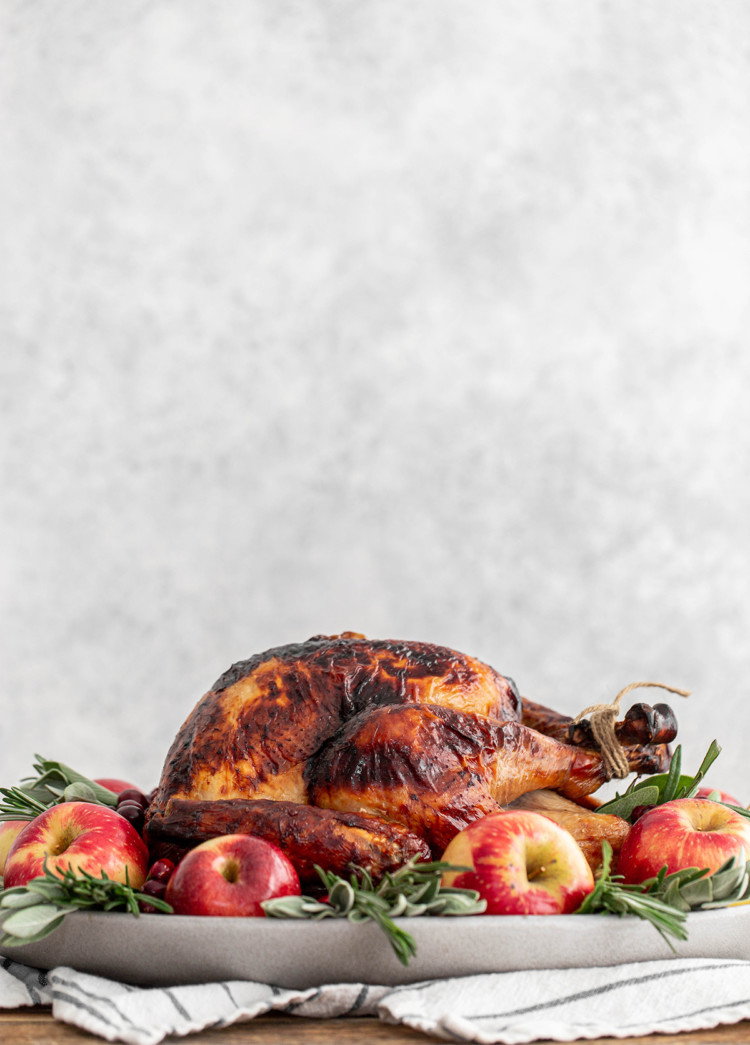
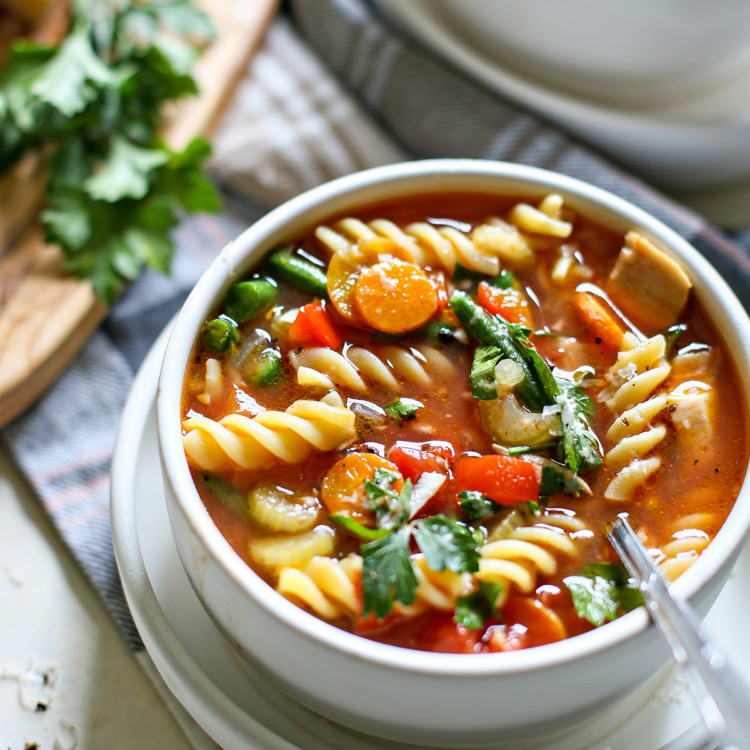
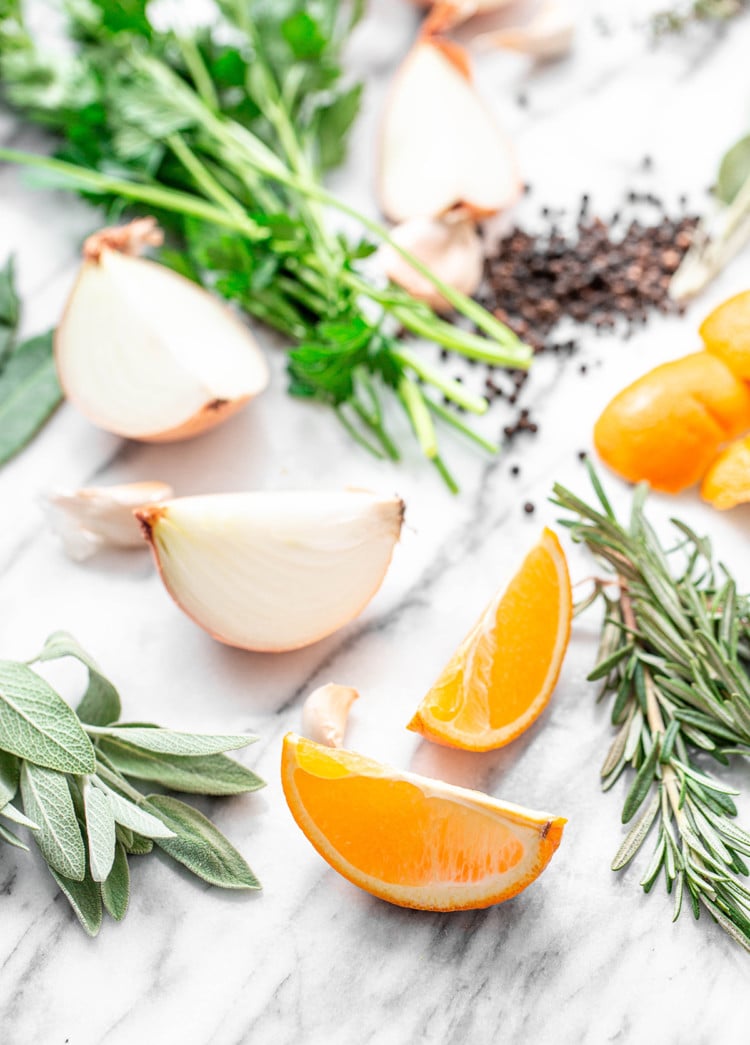

Kathy says
For the last 4 years I’ve been the Thanksgiving cook, but have never tried a brine, because I didn’t want a sweet fruity turkey. Herbs and butter are all good, but most brines include juice or fruit. Your thoughts/suggestions?
Thanks,
Katie Goodman says
Hi Kathy,
You can substitute water for the fruit juice if you’d like. I would recommend this Fresh Herb Brine. Eliminate the citrus and allspice berries if you don’t want a fruity flavor. You’ll be left with a pretty basic salt water brine with garlic, peppercorns, lots of herbs: thyme, sage, rosemary, parsley, and bay leaves.
It would also be good to chop up some fresh herbs and mix that with butter and finely minced fresh garlic. Rub that in between the turkey’s skin and the meat just before you roast the turkey. If you pull the skin up carefully you’ll be able to form a pocket of sorts to put all of that herbed butter in, which will flavor the turkey while it cooks and help keep the breast meat moist. You can also rub some inside the turkey cavity. Hope that helps!
Kathy says
Thank you so much for your response. I’ll give it a try.
Erin says
Please help!
I had no choice this year and had to buy a frozen turkey. It has salt injected in it…. I’ve heard brining isn’t necessary if previously injected. So… My thought was to do the aromatics inside & then rub herbs/olive oil under the skin. What are your thoughts? To brine or not to brine? Thank you!
Katie says
I would chop herbs and garlic and mix with soft butter and olive oil. Spread all over inside and out and under the skin covering the breast as well. Put carrot, celery, onion, and a few sprigs of herbs inside the cavity. Good luck!
Loraine says
Thanks Katie! With all your awesome tips (and my mom here), I really think my turkey will be a huge success this year!
Erin @ Texanerin Baking says
Fresh herb and citrus brine sounds amazing! Definitely about to check that out. I’ve never made an entire turkey but often make boneless and skinless turkey breast. And I’m pretty sick of my regular recipe so I can’t wait to try that one.
I’ve also never bothered with brining! You’ve convinced me. Will do next time!
Stephanie @ Girl Versus Dough says
We’re making the turkey for the first time ever this year (eek!), so these tips will DEFINITELY come in handy!